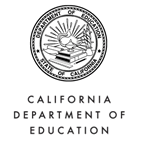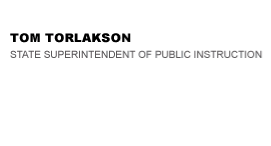Adult Education Fund and Deferred Maintenance Fund


Official Letter
Official Letter
Dear County and District Chief Business Officials and Charter School Administrators:
ADULT EDUCATION FUND AND DEFERRED MAINTENANCE FUND
This letter provides updated guidance concerning the Adult Education Fund and the Deferred Maintenance Fund and how local educational agencies (LEAs) may continue to use these funds in conformity with generally accepted accounting principles (GAAP).
This is a follow up to the California Department of Education’s (CDE) letter of January 7, 2011, regarding the new fund balance classifications required by the Governmental Accounting Standards Board Statement 54 (GASB 54). It is also a follow up to CDE’s letter of April 17, 2009, regarding fiscal issues related to budget reductions and flexibility provisions enacted pursuant to education trailer bill Senate Bill 4 of the 2009–10 Third Extraordinary Session (SBX34) (Chapter 12, Statutes of 2009). Both letters are available on the CDE Web site at http://www.cde.ca.gov/fg/ac/co/.
BACKGROUND
The Adult Education Fund and the Deferred Maintenance Fund (Funds 11 and 14 in the Standardized Account Code Structure) have been in place for many years. They were originally established pursuant to statute to allow LEAs to separately account for state funding restricted for the Adult Education and Deferred Maintenance programs.
Prior to categorical flexibility implemented by SBX3 4 in 2009, both Fund 11 and Fund14 met the definition of special revenue funds, as clarified by GASB 54, in that both were substantially composed of restricted or committed revenue sources. However, the categorical flexibility provisions of SBX34 removed the program restrictions formerly associated with state Adult Education and Deferred Maintenance funding sources, making those funding sources available for any educational purpose for the five-year period 2008–09 through 2012–13 (which was extended through 2014–15 by SB 70 [Chapter 7, Statutes of 2011]). Consequently, Fund 11 and Fund 14 currently do not meet the definition of special revenue funds, because the primary sources of funding formerly associated with them are no longer restricted to the purposes of those funds.
Nonetheless, the CDE elected not to close Fund 11 and Fund 14 because of the uncertainty surrounding whether the associated programs may be reinstated at the end of the flexibility period. The CDE’s April 17, 2009, letter indicated that the CDE was researching statutory and accounting requirements relating to the continued use of the Deferred Maintenance Fund and the Adult Education Fund, and would issue further guidance when that research was complete. That research depended in part on the then-upcoming issuance of GASB 54, which was expected to specifically address special revenue funds.
The CDE has completed its research on how LEAs might still use Fund 11 and Fund 14 in accordance with GAAP and has communicated its guidance to LEAs on various channels. The CDE is now formalizing that guidance in this letter.
ACCOUNTING FOR FUND 11 AND FUND 14
To conform to GAAP, LEAs that wish to continue to use Fund 11 for a program of education for adults or Fund 14 for purposes of deferred maintenance of its facilities may do so only if a substantial portion of these funds’ inflows are restricted or committed revenue sources and, further, only if those restricted or committed revenue sources are expected to continue. For the majority of LEAs, this will require taking formal action to commit flexed state revenues to the purposes for which these funds were originally intended. The committed revenue is then recorded as revenue of the special revenue fund, not as an interfund transfer.
This represents a change in the CDE’s initial guidance to LEAs on accounting for flexed revenue that is to be expended in a special revenue fund rather than in the general fund. The CDE’s initial guidance to LEAs was that all flexed revenue, including amounts formerly restricted to Adult Education and Deferred Maintenance, should be reported in the general fund using Resource 0000, Unrestricted, and Object 8590, Other State Revenue; and that flexed amounts to be expended in any other fund should then be moved to those funds via an interfund transfer. The CDE’s updated guidance is that flexed revenue committed by an LEA to the purposes of education for adults or deferred maintenance should be reported as revenue directly in Fund 11 or Fund 14, using Resource 0000, Unrestricted, and Object 8590, All Other State Revenue.
The requirement that a substantial portion of Fund 11 or Fund 14 inflows be from a restricted or committed revenue source does not preclude an LEA from assigning additional amounts to the purposes of these funds. Amounts assigned to the purposes of these funds may be recorded via an interfund transfer.
Note that an LEA’s action to commit flexed revenues in order to justify the use of a special revenue fund does not make the flexed revenues restricted; they remain unrestricted.
Theoretically, where an LEA receives federal revenue for adult education, the federal revenue alone might be great enough to compose a “substantial portion” of the revenues of Fund 11, thereby justifying the use of the special revenue fund without the LEA needing to commit any flexed state revenues. The LEA could then continue to use an interfund transfer for flexed state revenues that the LEA assigns to the purposes of that fund. However, the CDE advises that for consistency, the LEA should commit any flexed state revenues that it intends to spend on adult education within Fund 11 and report them as revenues of Fund 11.
For purposes of determining whether a revenue source constitutes a substantial enough portion of the inflows of a special revenue fund to justify the use of the fund, the amount is not required to be a majority (e.g., greater than 50 percent) of the inflows of the fund. GAAP is silent on the meaning of “substantial” in this context. Evolving industry practice is that 20 to 50 percent is a reasonable range for making this determination.
GAAP specifies that committed balances, alone, are not sufficient to justify the continued use of a special revenue fund. There must be a committed or restricted revenue source that is expected to continue. When an LEA does not expect to continue to receive revenue sources restricted or committed to the purposes of Fund 11 or Fund14, GAAP requires that the LEA should transfer any balances remaining in these funds to the general fund.
Note that the guidance in this letter applies to special revenue funds only. GAAP does not require that other governmental funds, such as capital project funds or debt service funds, be composed substantially of a restricted or committed revenue source. It remains appropriate for an LEA to use an interfund transfer for moneys it assigns to those other types of funds.
Also note that the guidance to commit certain flexed revenues is a rare exception to the general observation that for LEAs, in contrast to most other governments, the difference between the actions giving rise to the committed and assigned classifications of fund balance is apt to be minimal. When in doubt, an LEA should use the classification that reflects the lowest level of constraint.
For further information regarding categorical flexibility provisions or the provisions and implementation of GASB 54, please refer to the CDE’s letters referenced above.
If you have any questions regarding the guidance in this letter, please contact the Office of Financial Accountability and Information Services by phone at 916-322-1770 or by email at sacsinfo@cde.ca.gov.
Sincerely,
Scott Hannan, Director
School Fiscal Services Division
